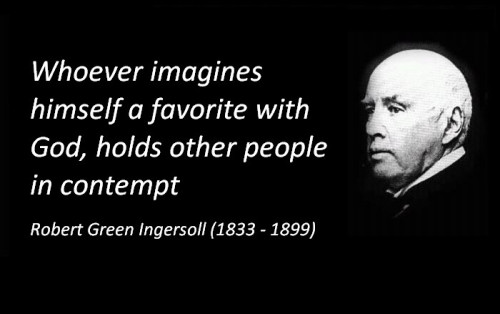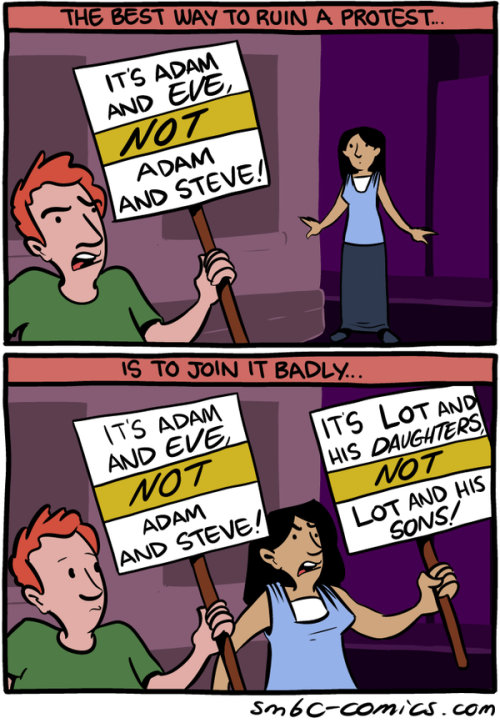Above: The libertarian vision of America’s future
Brian Beutler’s piece on libertarians’ goal to return the U.S. to the Lochner Era through the courts should scare you.
It’s hardly news to political junkies that libertarians seek to destroy a
century of regulations that created what was great about the United
States in the twentieth century. But because a lot of seemingly smart
people take libertarianism seriously as an intellectual idea, their
actual nefarious goals are often muted. Libertarians want to return this
nation to an era of workplace deaths, of unlimited working hours, of
low wages, of industry polluting wherever they want with whatever
substances they choose, etc. They openly say that the nation went off
the rails with the Progressive Era (
Karl Rove and
Glenn Beck have said this on top of the libertarian crew) and hope to
return us to the Gilded Age. They’ve gone a long ways toward succeeding,
as I have documented on this blog for the past four years.
They
are also really close to the big coup. That would be a Republican
victory in 2016 and the replacement of a couple of elderly Supreme Court
justices with Thomas and Alito-types who are happy to do the bidding of
corporations.
All
libertarians want to fight federal regulations in Congress and the
executive branch. But Barnett and his allies think courts should be
empowered to throw regulations out even if political majorities support
them. These Lochner revivalist professors have established beachheads at
law schools across the country. In 2002, UCLA law professor Eugene
Volokh founded a blog, The Volokh Conspiracy, as a hub for libertarian
ideas, including Lochner revisionism. Today,
it has become the most prominent academic legal blog in the country and
now publishes under the auspices of The Washington Post. It boasts
nearly two dozen contributing professors and mainlines detailed and
informed libertarian legal arguments to thousands of the nation’s top
lawyers, law students, clerks, judges, and opinion-makers every day.
The
contributors to The Volokh Conspiracy teach at the University of
Minnesota, Northwestern, Emory, Duke, and elsewhere. Several hold
positions at George Mason University’s law school, which is famous for
its conservative faculty and, in 36 short years, has rocketed to
prominence as one of the 50 best law schools in the country. In 2011,
GMU law professor and Volokh Conspiracy contributor David Bernstein
published a book titled Rehabilitating Lochner, and that’s exactly what
he, Barnett, and their contemporaries have been attempting to do.
Again,
it drives me crazy that people respect what happens at Volokh
Conspiracy because these are horrible people. They aren’t hiding it
either:
To dismiss the
debate between libertarians and traditional conservatives over Lochner
as an academic sideshow is to misunderstand the stakes. “A full-fledged
return to Lochner would put a constitutional cloud over a whole host of
laws that we all take for granted today,”
said Sam Bagenstos, a liberal constitutional scholar at the University
of Michigan who has argued cases before the Supreme Court. “Laws
guaranteeing workers the right to join a union without being fired, and
the right to earn a minimum wage and receive overtime if working more
than 40 hours a week, laws protecting worker safety, and laws protecting
workers and customers against discrimination based on race or other
protected statuses, just for starters.”
I asked Barnett whether the social welfare laws on the books today would be permitted under his reading of the Constitution. “Probably not at the federal level,” he said.
That’s
why Barnett and his contemporaries prefer to root their arguments in
specific injustices rather than categorical abstractions. Why shouldn’t
bakers be allowed to work more than 60 hours a week, or individuals be
allowed to remain uninsured? Why should the government be allowed to
regulate out of existence my right to hail a driver or your right to
rent a stranger’s house for a weekend?
Both
camp and mill workers felt the pain and shock of severe injury in a
dangerous and highly mechanized working environment and saw workers die
horrible deaths. These technologies made logging a more dangerous and
deadly job. Cables and machines broke, becoming deadly whipsaws. The
flying logs of high-lead logging crushed workers’ heads. The state of
Washington began collecting data on workplace injuries in 1912. Between
that date and 1929, between 124 and 261 loggers died every year in the
timber industry. In 1914, 63,350 people worked in the timber industry,
thirty-five per cent of the state’s workforce. In the first five months
of that year, there were 4,928 reported accidents that injured or killed
timber workers.
Working in the region’s
watery environment contributed to this death toll. The Northwest’s cold
rain and snow made workers sick while the workers toiling on floating
logs in log ponds or river drives risked their lives. At least nine
loggers drowned on the job in 1906, including J.W. Roth of Springfield,
Oregon and Ralph Leedy of Hoquiam, Washington who died in separate
incidents on log ponds and J.K. Lynn who fell into a river near Hoquiam
while rafting logs. Alfred Aasen fell into a cold river while working in
the spring of 1916. He did not drown, but he caught pneumonia while
riding on a rail car the ten miles back to camp in soaking clothes and
soon died.
Machines killed far more workers than water and cold. On August 28,
1905, Clise Houston reached to clear an obstruction from his saw. He
fell into it and died. Finnish immigrant John Koski found a job with the
Simpson Logging Company in a camp near Matlock, Washington. On June 18,
1904 nearby tree fallers shouted “Timber!” He did not move and the tree
landed directly on top of him, crushing him beyond recognition. Koski
had no family in America and his co-workers had no way to inform his
relations in Finland of his demise. The company paid for the burial.
Karl Carlson worked in the Middleton mill in Aberdeen, Washington. In
1905, a belt fell off its course and Carlson tried to guide it back on
to the pulley with a shovel. The shovel became entangled with the belt
and he lost control of it. The machine tore the shovel from his hands
and plunged it, handle first, through his body. Carlson lingered for a
day before dying, leaving behind a wife and child.
The
lucky workers were merely maimed. Morris Campbell worked in J.E.
Nichols’ sawmill in La Conner, Washington. In the last days of 1899, he
caught his arm in a mill saw. It was amputated at the shoulder. In 1900,
Frank Lang lost most of his left hand running a band saw in the
Centralia Shingle Mill in Centralia, Washington. In 1901, Martin Boyer’s
foot got caught in machinery in a Centralia mill. Doctors amputated. In
a nation without a social safety net, injured workers often fell
through the cracks into a lifetime of poverty. Workers like Campbell,
Lang, and Boyer faced grim futures as disabled persons, as did many
people disabled on the job before the passage of the Civilian Vocational
Rehabilitation Act in 1920, which provided occupational training and
job placement for those injured on at the workplace. Many workers chose
self-medication. Joseph Gillis of Seattle lost a leg while working at
the McDougal and Jackson logging camp near Buckley, Washington. He sued
for $10,000 but overdosed on the laudanum he used for pain the day
before he lost his suit.
This
is the America where Volokh writers hope to take us Even if they say
that’s not what they foresee, that’s the reality. In calling for a
return to Lochner-era policies, there is no guarantee the Supreme Court won’t rule, say, OSHA unconstitutional.










